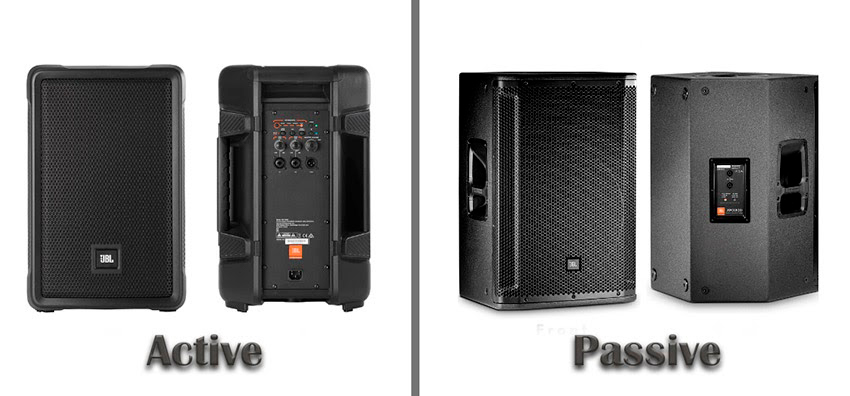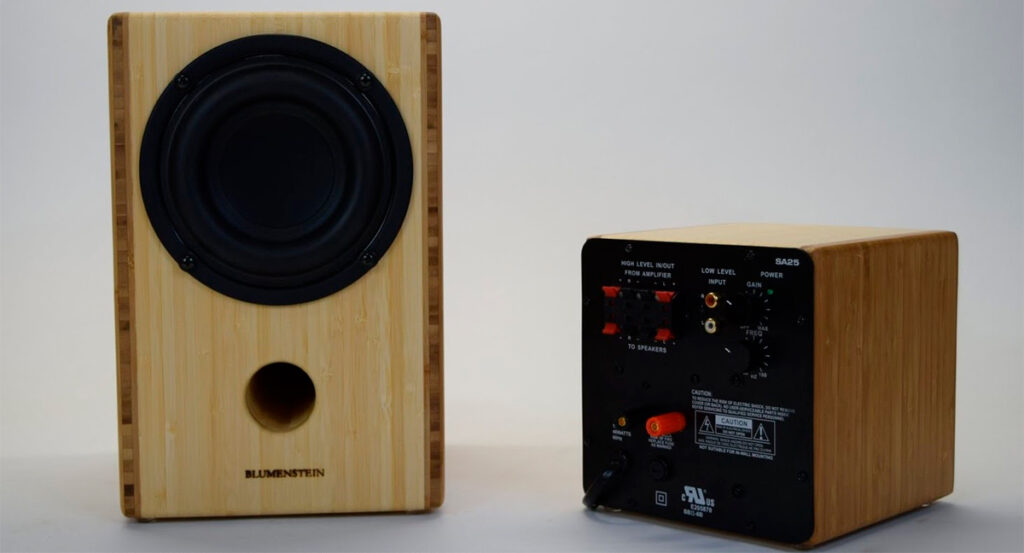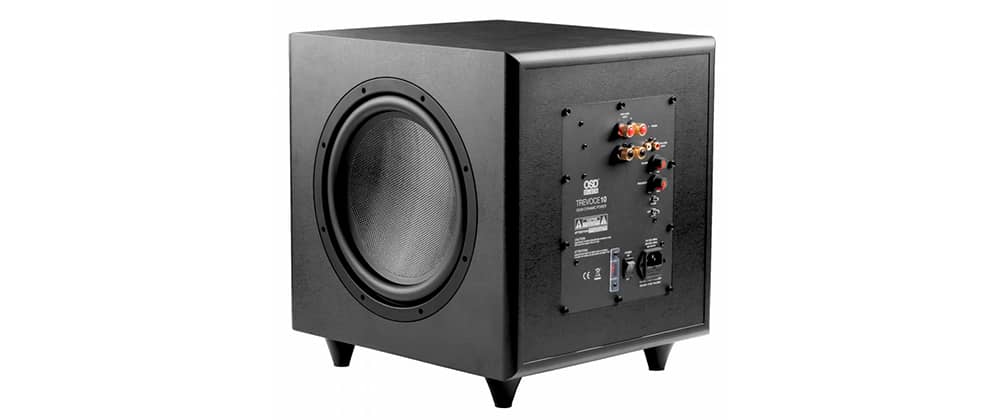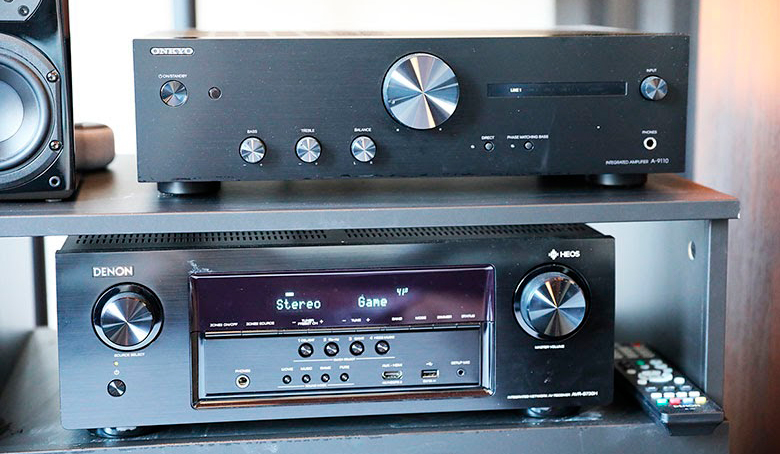A subwoofer is a type of speaker that reproduces low-frequency sound. It doesn’t matter how big or small this speaker is. Even a small 8-inch subwoofer will play one of the most important roles in the system. However, subwoofers differ not only in the size of the woofers. Some subwoofers have a built-in amplifier, and the others require a connection to an external power source. That is why they are divided into passive and active ones.

Your choice in the active vs passive subwoofer battle will have a noticeable impact on your acoustic system and its uniformity. It’s especially hard to make this decision considering the fact that the presence or absence of an inbuilt amplifier has no discernible effect on the speaker’s sound quality. It’s more of a matter of convenience. The sound quality will be determined by your ability to configure the sub so that it blends in with the rest of your equipment.
What is a Passive Subwoofer?
A passive subwoofer requires an external power source (that is why it’s called “passive”). This can be an amplifier or receiver. Due to the absence of an integrated amp, it occasionally produces a weaker bass. However, passive subwoofers are conventionally used in multi-subwoofer setups. Obviously, two non-powered subwoofers will produce better sound with more powerful bass than a single active model in your setup.
Passive subs also allow youto create a daisy chain, linking several devices together. This allows the bass to be distributed evenly throughout the room. Moreover, a non-powered subwoofer can be easily upgraded. If you pair it with a high-quality amplifier, the sound will improve drastically.

What is an Active Subwoofer?
An active (or powered) subwoofer has a built-in power source (amplifier) and only needs to be connected to an audio source. That is why they are more popular than passive ones. Besides, active subs are louder thanks to the integrated amp.
Powered subs are not easy to upgrade. You only can change its enclosure or placement, but it won’t give you a wow effect. So, if you will ever want a significantly improved bass, you will probably have to buy a new sub. Moreover, if the internal amp breaks or has any other issues, it will be extremely difficult to replace.

Differences
Power
A passive subwoofer requires a power source that can deliver enough power to produce deep and rich bass. In any other case, it will not function properly. Passive subwoofers also use less power than active ones, allowing you to save money on your electric bill.
An integrated amplifier provides the exact amount of power needed by an active subwoofer to reproduce sound. Additionally, powered sub takes the load off the receiver, allowing it to use more power to enhance the performance of your speakers.
Components
As already mentioned, the main difference between the two types of subwoofers lies in their internal components. Active subwoofers normally require only one cable for connection and operation. Meanwhile, their non-powered analogs need:
- a power source (amplifier or receiver)
- a power cable
- a cable for audio signal transmission
Setup
Passive subwoofers are more complex in terms of setup since they require additional equipment to function, and therefore you will have to deal with a lot of cabling. In order to set it up, you will also need to know the precise information about the power level and frequency range to choose the proper amplifying device for it. When there is a mismatch, both the sub and the device may blow. This also means that you will be restricted when buying a passive model since you’ll be able to choose only between the models that match your amp/receiver.

Powered subwoofers are much easier to set up. You won’t have to deal with problems related to compatibility and power supply. Active subs typically do not have any demands or restrictions on receivers or preamps, so you can connect one to any component of your audio system. In fact, it’s a plug-and-play solution. It’s also not necessary to connect it to a receiver if you don’t want to.
Design
When it comes to design, it’s hard to make passive vs active subwoofer comparison since they’re both typically cube-shaped units. However, they also may be available in tube-shaped enclosures. Passive subwoofers don’t have an amplifier inside and therefore, they are smaller and more lightweight. Plus, a lot of passive subwoofers come as in-wall models which means that they can be mounted in the wall.
Active subwoofers are usually larger and heavier since they incorporate an internal amplifier. However, if you are searching for a sub for a big room, this most likely won’t be a great problem for you. A setup with a powered subwoofer will look much neater due to less cabling (or absence of any cables if you own a model with a wireless connectivity option). This also means that you are getting more placement options.
Connectivity
The simplest way to connect a passive subwoofer is to use an RCA cable to connect it to the amplifier’s LFE or subwoofer output. Only if it’s already connected to an amplifier, you can connect it to the receiver via a standard subwoofer pre-out. However, old receivers usually don’t have a dedicated subwoofer output and, in this case, you can perform connection using speaker connectors. Passive subwoofers are also better suited for acoustic systems with two or more subs. Because most audio sources only have one output for a powered sub, connecting multiple of them will be difficult.
The active subwoofer can be connected to a receiver via a dedicated subwoofer output. This type of connector is also present in most speakers, so you also can hook up your sub to them.
Built-in wireless connectivity option is available only in active models. It’s also possible to adjust a wire-free connection with the help of a wireless transmitter/receiver kit (it can be connected to any active subwoofer). As for the passive model, the wireless connection is impossible.
Price
Comparing the prices of passive subwoofer vs active subwoofer will not show a fundamental difference between the types. The difference is not so significant, and none of them will cost you a fortune since both types are available in a wide range of low-cost and premium options.
Although passive models are generally considered to be cheaper than powered ones (since you don’t have to overpay for an internal amplifier), the necessity of an amplifying device brings additional cost. Most receivers and amps are generally more expensive than subwoofers. Plus, you will need high-quality cables to supply power and signal. However, if you already have all the necessary components, a high-quality passive subwoofer won’t be a costly purchase for you.
However, in most cases, an active subwoofer is a more cost-effective solution. Despite their higher price, they include everything required for operation, including the cable. On the other hand, you also should consider that powered subs are power-hungry which also adds the cost to your electricity bills.
Conclusion
The presence of a built-in amplifier is the primary distinction between the two types. A powered subwoofer is an all-in-one option, whereas a passive sub requires an external power source.
So, how should you make your decision? If you have everything required for the connection of a passive sub, you will get a lot of benefits when buying one. This will allow you to save money on the purchase and bills, as well as decrease the load on your receiver. It will also allow you to easily connect more than one subwoofer.
However, if you are building your audio/home theater system from scratch, a passive sub with all the additional components may just not fit your budget. This is where you can make use of a powered subwoofer. In addition, if you are an inexperienced user who wants less hassle and doesn’t need more than one subwoofer, an active model is your way to go.
So, in the active vs passive subwoofer comparison, which is better? Actually, this battle doesn’t have a winner. Each type has its own pros and cons, and no one of them is a superior option. The best choice is, in fact, the most suitable choice for your personal needs. You should keep in mind that if the sub is not suitable for your audio system or is installed incorrectly, neither the powered nor passive models will sound great.

Hi everyone! I’m Thomas Moody, also known as Guitarzan.
